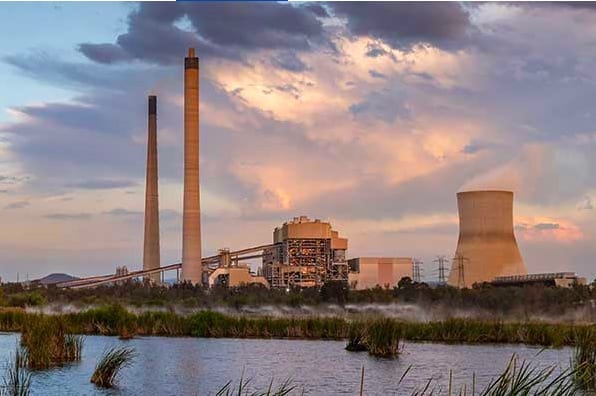It seems a little perverse that in the same week that the IPCC released its bleak report on the climate impacts of burning fossil fuels, and warned of more intense floods and fires, Australia’s biggest coal generator declared that its short term outlook was looking better – thanks to recent floods and fires.
AGL’s annual result reveals a sea of red ink – massive write downs on the value of key assets and long term contracts, and a plunge in operating profits, all due to the fall in wholesale prices caused by the influx of new wind and solar projects, and the growth of household rooftop solar.
Prices on Australia’s wholesale electricity market have fallen rapidly in the past two years, and only began to rise again in recent months when things started to go wrong for coal generators.
First there was the dramatic explosion at the Callide coal plant in Queensland, and then the flooding in Victoria which hit the Yallourn coal mine and forced that generator to ramp down production.
Both events caused prices to soar. The market thrives on “scarcity”. The only other price peak noted by AGL came in December, when a “transformer” incident at its ageing and soon to be closed Liddell generator took out one unit. In other words, it’s only bad news that delivers good news for shareholders.
AGL describes the prospect of falling prices as one of its “headwinds”. As chief operating officer Markus Brokhof noted, when things are looking good, as they did in the third quarter with mild temperatures and no unplanned outages, things were actually bad, at least in terms of prices and profits.
Or, as CEO Graeme Hunt put it, as he observed the “unplanned outages” and other planned outages: “Pleasingly the dotted (price) line indicates that markets expected recovery to be sustained into FY23.” Hooray!
AGL’s strategy to deal with the energy transition is to split its business into two, one focused on renewables, distributed energy, electric vehicles and maintaining links to customers, and the other to run down the remaining coal generation fleet and try to change these into low carbon industrial hubs.
AGL will close Liddell in early 2023, but wants to hang on to the Bayswater coal plant for at least another decade, and keep the heavily polluting Loy Yang A brown coal generator running until 2048.
That’s not OK for the climate, and countless reports and analyses insist that coal generation needs to be done with, or close to it, in developed countries such as Australia by 2030. Thankfully, AEMO is developing a roadmap that could allow that to happen by 2035.
The chances are, however, that others will decide on an early closure. If not from a government mandated zero emissions target – fat chance with the federal Coalition – it will come from customers, such as the Tomago aluminium refinery which now hopes to be powered by renewables before the end of the decade.
Such a move from Tomago, whose CEO was hitherto a wind, solar and battery skeptic, will sound the death-knell for Bayswater.
It underlines the fact that customers – big and small – do hold the keys to our future. As the Australasian Centre for Corporate Responsibility (ACCR) notes, AGL’s strategy is simply not consistent with the Paris climate goals.
The only way it can be is if the matter is taken out of its hands by customers or a rapid technology transition.
And this is where the third big hope of AGL and other incumbents lies with federal energy and emissions reductions minister Angus Taylor, who shows no interest at all in achieving further emissions reductions or facilitating the transition to net zero emissions in this half of the century.
Taylor’s only discernible policy stance is to push for the introduction of so-called capacity markets, a much criticised mechanism that will act as a sort of subsidy for coal power stations, and in pushing more funds and subsidies into fossil fuels of various sorts.
In the meantime, on an operating profit basis, the best that AGL and the other big coal generators can hope for – even as they admit that “baseload” is now becoming redundant – is more extreme events and more volatility, as long as it doesn’t happen to their own kit.
Fossil fuel emissions will likely lock that in.










